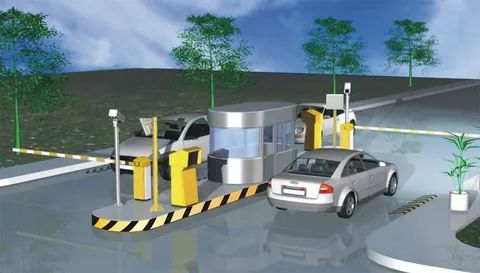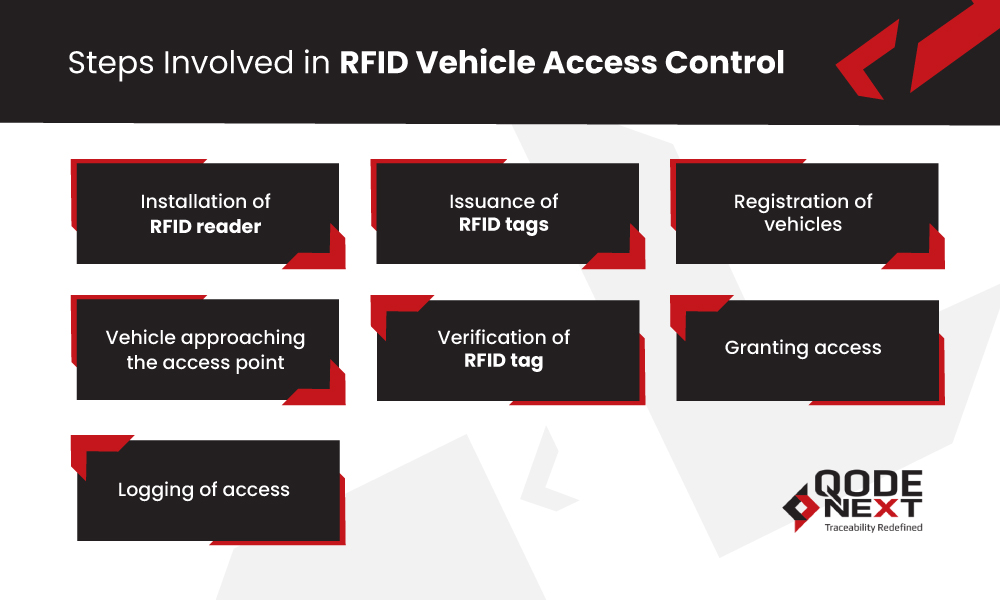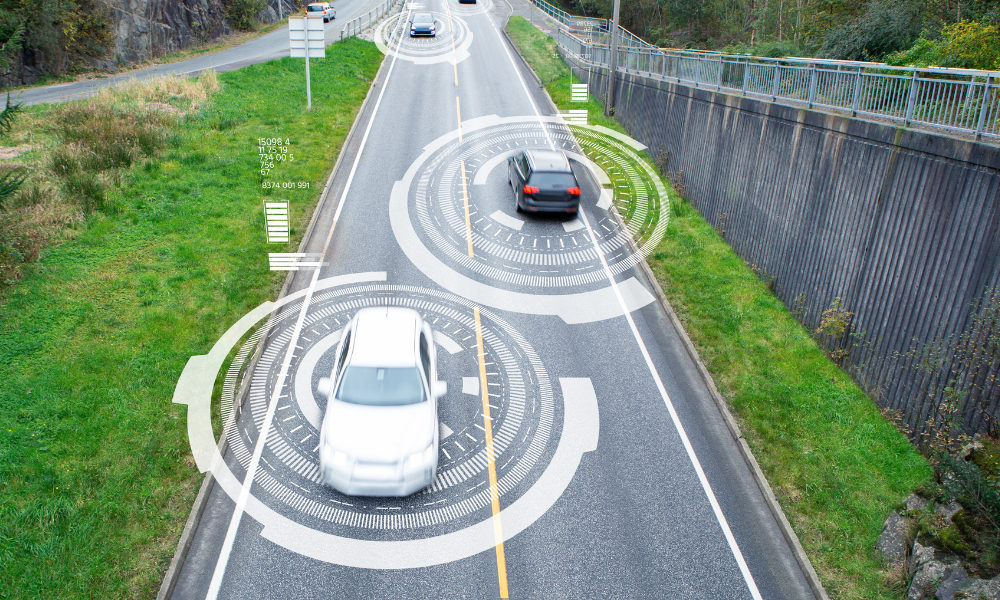As industries grow, the need for efficient vehicle control systems becomes paramount. The traditional methods of controlling vehicle access to industrial units, such as security guards and physical barriers, are increasingly being replaced by advanced technologies such as RFID vehicle access control. This innovative system uses radio frequency identification (RFID) technology to manage the entry and exit of vehicles, allowing for better monitoring and control of the entire process.
In this blog post, we will explore how an RFID-based vehicle control system can help minimize losses in industrial units by improving security and reducing operational costs. So, let’s delve into the blog How does an RFID vehicle control system help to minimize the loss of the industrial units and see how it can benefit industrial units.

What Is an RFID Based Vehicle Control System?
An RFID (Radio Frequency Identification) based vehicle control system is a technology that enables automatic identification and tracking of vehicles using RFID tags. The system consists of an RFID reader that is installed at the entry and exit points of the parking lot or garage, and RFID tags that are attached to the vehicles.
When a vehicle with an RFID tag enters or exits the parking lot, the RFID reader reads the information stored in the tag, and the system automatically opens or closes the gate or barrier. This system provides a secure and efficient way to manage vehicle access and control in various environments such as parking lots, garages, and toll booths.
Listed below are the key features of RFID Vehicle Access Control Systems
- Automatic Identification: The RFID technology used in the system enables automatic identification and tracking of vehicles.
- Security: The system provides a high level of security as only authorized vehicles with valid RFID tags can enter or exit the parking lot.
- Efficiency: The system improves the efficiency as it eliminates the need for manual checking of tickets or passes, resulting in faster entry and exit of vehicles.
- Real-time monitoring: The system provides real-time monitoring of vehicle entry and exit, enabling better control and management of the parking lot.
- Integration with other systems: The system can be integrated with other systems such as payment gateways, CCTV cameras, and access control systems.
- Multiple entry and exit points: The system can be designed to have multiple entry and exit points, enabling better traffic flow management.
- Remote access: The system can be accessed remotely, allowing authorized personnel to monitor and control the parking lot from a central location.
- Scalability: The system is scalable and can be expanded to cover larger areas or accommodate more vehicles.
- User-friendly interface: The system has a user-friendly interface that makes it easy to use and operate.
- Maintenance: The system requires minimal maintenance and is designed to have a long lifespan.
- Customization: The system can be customized to meet the specific requirements of the parking lot or garage.
- Analytics and reporting: The system provides analytics and reporting capabilities, enabling better decision-making and management of the parking lot.
- Durability: The RFID tags used in the system are durable and can withstand harsh environmental conditions.
- Cost-effective: The system is cost-effective as it reduces the need for manual labor and improves efficiency.
- Green technology: The system is a green technology as it reduces the use of paper tickets and passes, resulting in less waste and environmental impact.

Steps Involved in RFID Vehicle Access Control
RFID (Radio Frequency Identification) Vehicle Access Control is a security system that uses RFID technology to grant access to vehicles. The system typically involves the installation of an RFID reader at the entry/exit point of a parking lot or a restricted area. The reader communicates with RFID tags attached to vehicles to identify them and determine whether they are authorized to enter.
The steps involved in RFID Vehicle Access Control are as follows:
- Installation of RFID reader: The first step is to install the RFID reader at the entrance/exit of the restricted area. The reader is connected to a computer system that controls access to the area.
- Issuance of RFID tags: RFID tags are issued to authorized vehicles. These tags contain a unique identifier that is recognized by the reader. The tags can be attached to the windshield or license plate of the vehicle.
- Registration of vehicles: The details of the authorized vehicles are registered in the system. This includes the vehicle type, owner details, and the RFID tag number.
- Vehicle approaching the access point: When a vehicle approaches the access point, the RFID reader detects the tag attached to the vehicle.
- Verification of RFID tag: The reader communicates with the computer system to verify the RFID tag number and check whether the vehicle is authorized to enter the restricted area.
- Granting access: If the vehicle is authorized, the computer system sends a signal to open the gate or barrier, allowing the vehicle to enter. If the vehicle is not authorized, access is denied.
- Logging of access: The system logs all access attempts, including the time and date of entry/exit, the vehicle details, and whether access was granted or denied.

Minimize the Loss Through RFID Based Vehicle Control System
RFID for Vehicle Access Control is a convenient and secure way to manage vehicle access to restricted areas. It eliminates the need for manual checking of vehicle documents and allows for efficient monitoring of access.
RFID-based vehicle control systems have been increasingly adopted by industrial units to minimize losses and improve operational efficiency. Here are 15 ways in which an RFID-based vehicle control system can help minimize the loss in industrial units:
- Enhanced Security
An RFID-based vehicle control system provides an extra layer of security by allowing access only to authorized personnel or vehicles.
- Controlled Access
With an RFID-based vehicle control system, access to sensitive areas can be restricted to only authorized personnel or vehicles. This helps minimize the risk of theft or damage to equipment.
- Reduced Theft and Pilferage
RFID-based vehicle control systems help reduce theft and pilferage of goods and equipment by tracking and monitoring the movement of vehicles.
- Improved Inventory Management
RFID-based vehicle control systems can help improve inventory management by tracking the movement of goods and equipment in real time.
- Increased Operational Efficiency
An RFID-based vehicle control system can help improve operational efficiency by automating and streamlining the parking lot entry and exit control systems.
- Reduced Downtime
With an RFID-based vehicle control system, vehicle movement can be closely monitored, reducing downtime caused by lost or misplaced equipment.
- Real-Time Data Collection
RFID-based vehicle control systems provide real-time data on the movement of vehicles, allowing for quick decision-making and problem-solving.
- Improved Safety
An RFID-based vehicle control system can improve safety by ensuring that only authorized vehicles and personnel are allowed into the industrial unit.
- Compliance with Regulations
RFID-based vehicle control systems can help ensure compliance with regulations and guidelines regarding access control and inventory management.
- Cost-Effective
An RFID-based vehicle control system can be cost-effective in the long run as it reduces losses due to theft, pilferage, and downtime.
- Integration with Other Systems
RFID-based vehicle control systems can be integrated with other systems such as inventory management systems, security systems, and access control systems, improving overall efficiency.
- Reduced Paperwork
RFID-based vehicle control systems can help reduce paperwork and streamline processes, saving time and resources.
- Better Accountability
An RFID-based vehicle control system can provide better accountability by tracking the movement of vehicles and equipment, reducing the risk of misplacement or loss.
- Improved Maintenance
With an RFID-based vehicle control system, maintenance schedules can be easily tracked, ensuring that equipment is properly maintained and reducing the risk of breakdowns.
- Scalability
RFID-based vehicle control systems can be easily scaled to accommodate changes in the industrial unit’s operations, making them a flexible solution for long-term use.

FAQs – How Does an RFID Based Vehicle Control System Help to Minimize the Loss of the Industrial Units?
What Is the Benefit of Using RFID in a Vehicle?
The benefit of using RFID in a vehicle is that it allows for automatic identification and tracking of the vehicle without requiring physical contact. This can improve efficiency in processes such as toll collection, parking management, and fleet tracking.
How Could RFID Frequencies Be Used to Minimize Data Entry Errors?
RFID (Radio Frequency Identification) can be used to minimize data entry errors by automatically capturing data from tagged items, eliminating the need for manual data entry and reducing human error.
How Can RFID Help Solve Its Delivery Problem?
RFID technology can help solve delivery problems by providing real-time visibility of inventory and shipment movements, reducing errors, and improving overall supply chain efficiency. It can also enable automated tracking, monitoring, and inventory management, resulting in improved accuracy, speed, and cost-effectiveness.
How Will RFID Technology Help in Business to Increase Production and Reduce Defects?
RFID technology can increase production by improving inventory management, reducing stockouts, and automating processes. It can also reduce defects by enabling real-time monitoring and quality control, minimizing errors and waste.
Conclusion
An RFID-based vehicle control system can help minimize the loss of industrial units by providing a secure and efficient method for managing access to restricted areas. With RFID technology, authorized vehicles can quickly and easily gain access, while unauthorized vehicles are denied entry.
This helps prevent theft, damage, and other security breaches that can result in significant losses for industrial units. To implement an effective RFID vehicle access control system, businesses can turn to QodeNext, a leading provider of innovative RFID solutions. With their expertise and cutting-edge technology, QodeNext can help businesses protect their assets and minimize losses.


